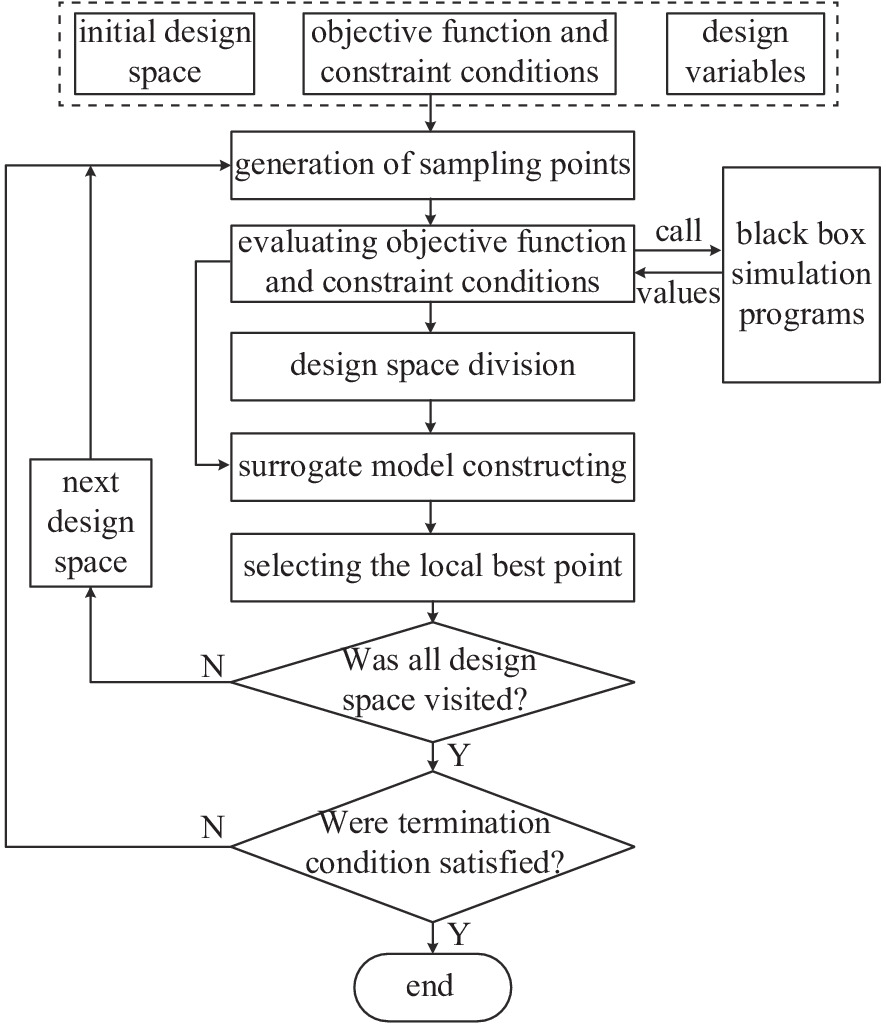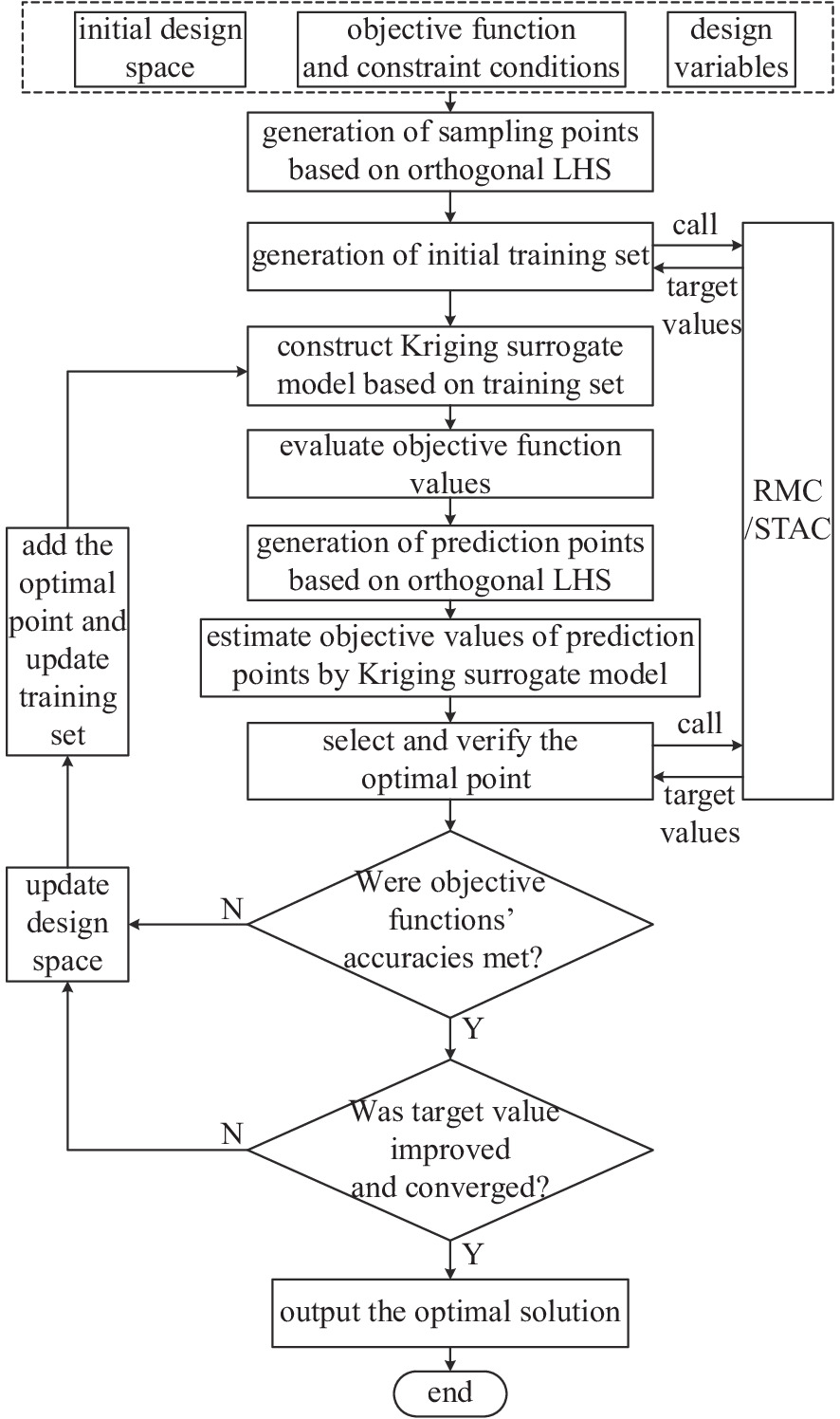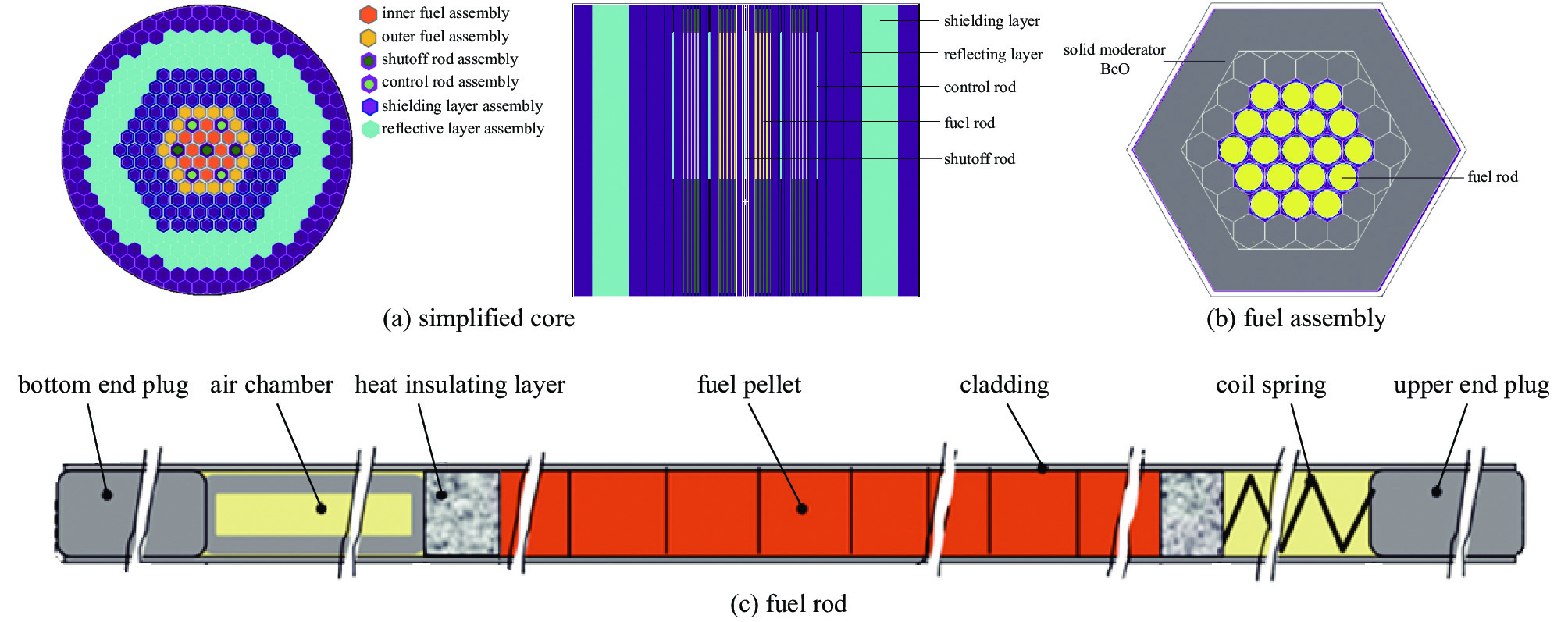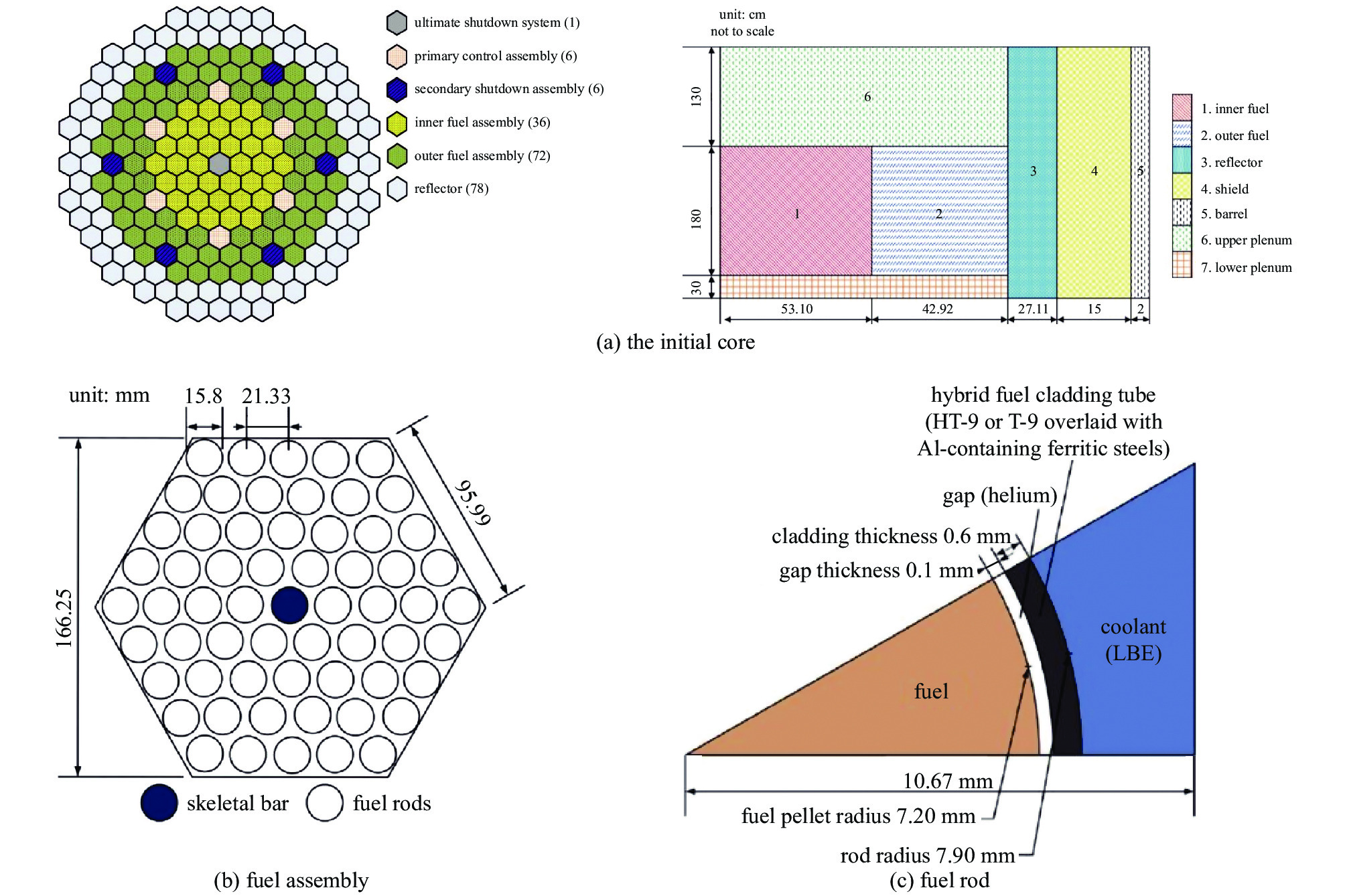Intelligent optimization method for lead-bismuth reactor based on Kriging surrogate model
-
摘要: 铅铋反应堆广泛应用的需求要求研究人员在现有堆芯方案的基础上开展大量优化设计工作。针对铅铋反应堆多物理、多变量、多约束耦合影响的多维非线性约束优化设计问题,基于Kriging代理模型、正交拉丁超立方抽样和SEUMRE空间搜索技术构建铅铋反应堆智能优化方法,耦合物理蒙卡计算/热工分析程序,开发包含抽样、耦合程序前后处理、反应堆优化分析功能的优化平台,并以铅铋反应堆SPALLER-4,URANUS为原型分别开展最小燃料装载量的方案寻优与参数优化验证。验证结果表明,该智能优化方法用于铅铋反应堆设计方案寻优和堆芯参数优化可行、有效,相比传统蒙卡程序计算寻优,在保证预测精度前提下极大地降低了计算成本,与URANUS初始模型比较,燃料装载量、堆芯总质量、活性区体积、堆芯总体积分别优化10.8%,11.5%,18.1%,17.1%,为基于代理模型的智能优化方法应用于铅铋反应堆的优化设计提供参考。
-
关键词:
- 铅铋反应堆 /
- 智能优化 /
- Kriging代理模型 /
- SEUMRE空间搜索 /
- 正交拉丁超立方抽样
Abstract: The extensive application requirements of lead-bismuth reactors require researchers to carry out a lot of optimization design work on the basis of existing core schemes. Aiming at the multi-dimensional nonlinear constrained optimization design problem of lead-bismuth reactor with multi-physical, multi-variable and multi-constraint coupling effects, an intelligent optimization method for lead-bismuth reactor was constructed based on Kriging surrogate model, orthogonal Latin hypercube sampling and SEUMRE spatial search technology. Coupled with physical Monte Carlo calculation/thermal ranalysis code, an optimization platform including sampling, pre-and post-processing of coupling program and reactor optimization analysis function was developed. Taking SPALLER-4 and URANUS as prototypes, the scheme optimization and parameter optimization verification of minimum fuel load were carried out respectively. The verification results show that the core intelligent optimization method is feasible and effective for the optimization of lead-bismuth reactor design scheme and core parameters. Compared with the traditional Monte Carlo calculation optimization, the calculation cost is greatly reduced under the premise of ensuring the prediction accuracy. Compared with the URANUS initial model, the fuel loading, the total mass of the core, the volume of the active zone and the total volume of the core are optimized by 10.8%, 11.5%, 18.1% and 17.1% respectively, which provides a reference for the intelligent optimization method based on the surrogate model applied to the optimization design of lead-bismuth reactor. -
表 1 Kriging代理模型常用相关函数及其表达式
Table 1. Commonly used related functions of Kriging surrogate model and their expressions
correlation function expression exponential function Rk(θk,dk)=exp(−θkdk) Gaussian function Rk(θk,dk)=exp(−θkd2k) linear function Rk(θk,dk)=max{0,1−θkdk} cubic spline function Rk(θk,dk)={1−15ζk+30ζ3k,0⩽ζk⩽0.21.25(1−15ζk)3,0.2<ζk<10,ζk⩾1,ζk=θkdk 表 2 SPALLER-4设计参数及其材料与优化变量取值区间
Table 2. Materials used for the design parameters of SPALLER-4 and the interval value of optimization variables
design
schemethermal
power/MWfuel
loading/kgequivalent
diameter
of active
region/cmheight of
active
area/cmaverage volume
power density
of active
region/(W·cm−3)fuel (mass
fraction
of Pu)/%coolant
and
reflectorshielding
layerSPALLER-4 4 577.89 95.4 80 6.99 PuN-ThN (31/48) 208Pb-Bi(90) B4C(126) URANUS 100 17580 97.02 180 19.18 UO2(9.55/17.09) 208Pb-Bi(27.11 cm) B4C(15 cm) design
schemesolid
moderator
(thickness/cm)gate
diameter
ratiofuel rod
core
radius/cmair gap
of fuel rod
(thickness/cm)cladding of
fuel rod
(thickness/cm)upper/lower
end plug
of fuel
rod (height/cm)gas cavity/
spring area
of fuel rod
(height/cm)top/bottom
insulation
of fuel
rod (height/cm)SPALLER-4 BeO (3.5) 1.20 0.60 He (0.015) TH-9(0.06) TH-9(3/3) He(48/14) He(1/1) URANUS — 1.35 0.72 He (0.010) TH-9(0.06) TH-9(30/30) He(130/30) — 表 3 Kriging代理模型预测Keff、燃耗的精度验证结果
Table 3. Accuracy verification results of Kriging surrogate model for predicting Keff and burnup
contrast
groupthickness
of solid
moderator/cmmass fraction
of Pu in
fuel/%fuel rod
core
radius/cmheight of
core active
zone/cmgrid
diameter
ratiothird-year Keff burnup/(MW·d·kg−1) prediction
by KSMcalculation
by RMCrelative
error/%prediction
by KSMcalculation
by RMCrelative
error/%1 4.6555 47.2024 0.2911 112.1659 1.3710 1.0502 1.0503 −0.0154 22.9477 22.7960 0.6654 2 4.8222 45.4101 0.2776 115.2353 1.3773 1.0352 1.0352 0.0006 24.6610 24.4460 0.8794 3 4.9908 48.9315 0.2608 118.1860 1.4117 1.0325 1.0334 −0.0846 26.8646 26.8940 0.1093 4 4.5899 48.8228 0.2117 103.6606 1.3534 1.0164 1.0174 −0.0987 46.3528 46.5440 0.4108 5 4.7828 46.6647 0.2173 116.5918 1.3548 1.0244 1.0234 0.0994 39.1589 39.3960 0.6019 表 4 SPALLER-4堆芯设计方案寻优结果
Table 4. Optimization results of SPALLER-4 core design scheme
thickness
of solid
moderator/cmmass fraction
of Pu in
fuel/%fuel rod
core
radius/cmheight of
core active
zone/cmgrid
diameter
ratiothird-year Keff burnup/(MW·d·kg−1) prediction
by KSMcalculation
by RMCrelative
error/%prediction
by KSMcalculation
by RMCrelative
error/%4.5732 49.8686 0.2003 100.0818 1.3131 1.0057 1.0052 0.0550 53.7021 53.7990 −0.0018 表 5 Kriging代理模型预测Keff、燃耗的精度验证结果
Table 5. Accuracy verification results of Kriging surrogate model for predicting Keff and burnup
contrast
groupfuel rod
core
radius/cmheight of
core active
zone/cmgrid diameter
ratiotwentieth-year Keff burnup/(MW·d·kg−1) prediction
by KSMcalculation
by RMCrelative
error/%prediction
by KSMcalculation
by RMCrelative
error/%1 0.7287 164.3119 1.3207 1.0010 1.0018 −0.0809 44.0797 44.4100 −0.7438 2 0.7373 157.4453 1.3208 1.0004 1.0007 −0.0338 45.2746 45.2710 0.0080 3 0.7388 156.9933 1.3211 1.0005 1.0009 −0.0409 45.2266 45.2130 0.0301 4 0.7410 153.9331 1.3205 0.9994 0.9999 −0.0585 43.5830 43.5540 0.0666 5 0.7374 157.4387 1.3203 1.0006 1.0003 0.0297 45.2645 45.2560 0.0187 表 6 URANUS堆芯设计参数优化结果
Table 6. Optimization results of design parameters for URANUS core
URANUS
corefuel rod
core
radius/cmheight of
core active
zone/cmgrid
diameter
ratioinitial
Kefftwentieth-year Keff burnup/(MW·d·kg−1) prediction
by KSMcalculation
by RMCrelative
error/%prediction
by KSMcalculation
by RMCrelative
error/%initial 0.7200 180.0000 1.3500 1.0289 — 1.0031 — — 41.5240 — optimization 0.7314 155.5838 1.2893 1.0307 1.0007 1.0010 −0.0229 46.5773 46.5530 0.0523 URANUS
corerefueling
interval/
EFPYfuel
loading/kgtotal mass
of core
(including
reflector)/kgvolume of
the active
area/m3average volume
power density
of the active
area/(W·cm−3)total volume
of core
(including
reflector)/m3maximum
temperature
of fuel
cladding/Kmaximum
temperature
of fuel
core/Kinitial 20 17580.0925 175459.3633 5.2138 19.1800 8.5734 600.6219 770.3892 optimization 20 15681.0697 155309.9496 4.2697 23.4208 7.1059 604.1702 796.0589 -
[1] 王建强, 戴志敏, 徐洪杰. 核能综合利用研究现状与展望[J]. 中国科学院院刊, 2019, 34(4):460-468. (Wang Jianqiang, Dai Zhimin, Xu Hongjie. Research status and prospect of comprehensive utilization of nuclear energy[J]. Bulletin of the Chinese Academy of Sciences, 2019, 34(4): 460-468 [2] 吴宜灿. 铅基反应堆研究进展与应用前景[J]. 现代物理知识, 2018, 30(4):35-39. (Wu Yican. Research progress and application prospects of lead-based reactors[J]. Modern Physics, 2018, 30(4): 35-39 [3] Zameer A, Mirza S M, Mirza N M. Core loading pattern optimization of a typical two-loop 300 MWe PWR using Simulated Annealing (SA), novel crossover Genetic Algorithms (GA) and hybrid GA(SA) schemes[J]. Annals of Nuclear Energy, 2014, 65: 122-131. doi: 10.1016/j.anucene.2013.10.024 [4] de Moura Meneses A A, Machado M D, Schirru R. Particle Swarm Optimization applied to the nuclear reload problem of a Pressurized Water Reactor[J]. Progress in Nuclear Energy, 2009, 51(2): 319-326. doi: 10.1016/j.pnucene.2008.07.002 [5] Khoshahval F, Minuchehr H, Zolfaghari A. Performance evaluation of PSO and GA in PWR core loading pattern optimization[J]. Nuclear Engineering and Design, 2011, 241(3): 799-808. doi: 10.1016/j.nucengdes.2010.12.023 [6] 王成. 新型优化算法开发及其在核动力装置优化中的应用[D]. 哈尔滨: 哈尔滨工程大学, 2018Wang Cheng. The development of new optimization algorithms and applications in optimal design for nuclear power plant[D]. Harbin: Harbin Engineering University, 2018 [7] 张扬. 多参数非线性系统全局敏感性分析与动态代理模型研究[D]. 长沙: 湖南大学, 2014Zhang Yang. The study on global sensitivity analysis and dynamic metamodel of multiple-parameters nonlinear system[D]. Changsha: Hunan University, 2014 [8] Kempf S, Forget B, Hu Linwen. Kriging-based algorithm for nuclear reactor neutronic design optimization[J]. Nuclear Engineering and Design, 2012, 247: 248-253. doi: 10.1016/j.nucengdes.2012.03.001 [9] Zeng Kaiyue, Stauff N E, Hou J, et al. Development of multi-objective core optimization framework and application to sodium-cooled fast test reactors[J]. Progress in Nuclear Energy, 2020, 120: 103184. doi: 10.1016/j.pnucene.2019.103184 [10] Kim K Y, Lee S M. Shape optimization of inlet plenum in a PBMR-type gas-cooled nuclear reactor[J]. Journal of Nuclear Science and Technology, 2009, 46(7): 649-652. doi: 10.1080/18811248.2007.9711571 [11] 李淞, 杨红义, 周志伟, 等. 基于克里金方法的快堆燃料组件设计[J]. 原子能科学技术, 2018, 52(7):1288-1293. (Li Song, Yang Hongyi, Zhou Zhiwei, et al. Design of fast reactor fuel assembly based on Kriging method[J]. Atomic Energy Science and Technology, 2018, 52(7): 1288-1293 doi: 10.7538/yzk.2017.youxian.0650 [12] Pebesma E J, Heuvelink G B M. Latin hypercube sampling of Gaussian random fields[J]. Technometrics, 1999, 41(4): 303-312. doi: 10.1080/00401706.1999.10485930 [13] Jin R, Chen W, Simpson T W. Comparative studies of metamodelling techniques under multiple modelling criteria[J]. Structural and Multidisciplinary Optimization, 2001, 23(1): 1-13. doi: 10.1007/s00158-001-0160-4 [14] 毛凤山, 陈昌富, 朱世民. 代理模型方法及其在岩土工程中的应用综述[J]. 地基处理, 2020, 2(4):295-306. (Mao Fengshan, Chen Changfu, Zhu Shimin. Surrogate model method and its application in geotechnical engineering[J]. Journal of Ground Improvement, 2020, 2(4): 295-306 [15] Younis A, Dong Zuomin. Metamodelling and search using space exploration and unimodal region elimination for design optimization[J]. Engineering Optimization, 2010, 42(6): 517-533. doi: 10.1080/03052150903325540 [16] Wang Kan, Li Zeguang, She Ding, et al. RMC – A Monte Carlo code for reactor core analysis[J]. Annals of Nuclear Energy, 2015, 82: 121-129. doi: 10.1016/j.anucene.2014.08.048 [17] Zhao Pengcheng, Liu Zijing, Yu Tao, et al. Code development on steady-state thermal-hydraulic for small modular natural circulation lead-based fast reactor[J]. Nuclear Engineering and Technology, 2020, 52(12): 2789-2802. doi: 10.1016/j.net.2020.05.023 [18] 赵鹏程. 小型自然循环铅冷快堆SNCLFR-100一回路主冷却系统热工安全分析[D]. 合肥: 中国科学技术大学, 2017Zhao Pengcheng. Thermal-hydraulic safety analysis of primary cooling system for small modular natural circulation LFR SNCLFR-100[D]. Hefei: University of Science and Technology of China, 2017 [19] 刘紫静, 赵鹏程, 张斌, 等. 超长寿命小型自然循环铅铋快堆堆芯概念设计研究[J]. 原子能科学技术, 2020, 54(7):1254-1265. (Liu Zijing, Zhao Pengcheng, Zhang Bin, et al. Research on core concept design of ultra-long life small natural circulation lead-based fast reactor[J]. Atomic Energy Science and Technology, 2020, 54(7): 1254-1265 doi: 10.7538/yzk.2019.youxian.0720 [20] 刘紫静, 赵鹏程, 任广益, 等. 长寿命小型自然循环铅基快堆燃料选型[J]. 原子能科学技术, 2020, 54(5):944-953. (Liu Zijing, Zhao Pengcheng, Ren Guangyi, et al. Fuel selection of long life small natural circulation lead-based fast reactor[J]. Atomic Energy Science and Technology, 2020, 54(5): 944-953 doi: 10.7538/yzk.2019.youxian.0402 [21] Jooeun Lee. Conceptual neutronic design of inverted core for lead-bismuth cooled small modular reactor[D]. Seoul: Graduate School of Seoul National University, 2017. [22] Kwak J, Kim H R. Development of innovative reactor-integrated coolant system design concept for a small modular lead fast reactor[J]. International Journal of Energy Research, 2018, 42(13): 4197-4205. doi: 10.1002/er.4177 [23] Shin Y H, Choi S, Cho J, et al. Advanced passive design of small modular reactor cooled by heavy liquid metal natural circulation[J]. Progress in Nuclear Energy, 2015, 83: 433-442. doi: 10.1016/j.pnucene.2015.01.002 [24] Shin Y H, Choi S, Cho J, et al. ICONE23-2135 design status of small modular reactor cooled by lead-bismuth eutectic natural circulation: Uranus[C]//Proceedings of ICONE-23 23rd International Conference on Nuclear Engineering. Chiba, Japan: 2015. [25] Driscoll N J, Hejzlar P. Reactor physics challenges in Gen-IV reactor design[J]. Nuclear Engineering and Technology, 2005, 37(1): 1-10. [26] Zhang Yan, Wang Chenglong, Lan Zhike, et al. Review of thermal-hydraulic issues and studies of lead-based fast reactors[J]. Renewable and Sustainable Energy Reviews, 2020, 120: 109625. doi: 10.1016/j.rser.2019.109625 [27] Grasso G, Petrovich C, Mattioli D, et al. The core design of ALFRED, a demonstrator for the European lead-cooled reactors[J]. Nuclear Engineering and Design, 2014, 278: 287-301. doi: 10.1016/j.nucengdes.2014.07.032 [28] Wallenius J, Suvdantsetseg E, Fokau A. ELECTRA: European lead-cooled training reactor[J]. Nuclear Technology, 2012, 177(3): 303-313. doi: 10.13182/NT12-A13477 [29] 杨红义, 过明亮. 中国实验快堆的设计创新与实现[J]. 原子能科学技术, 2020, 54(S1):199-205. (Yang Hongyi, Guo Mingliang. Design innovation and fulfillment of China experimental fast reactor[J]. Atomic Energy Science and Technology, 2020, 54(S1): 199-205 -






 下载:
下载:










